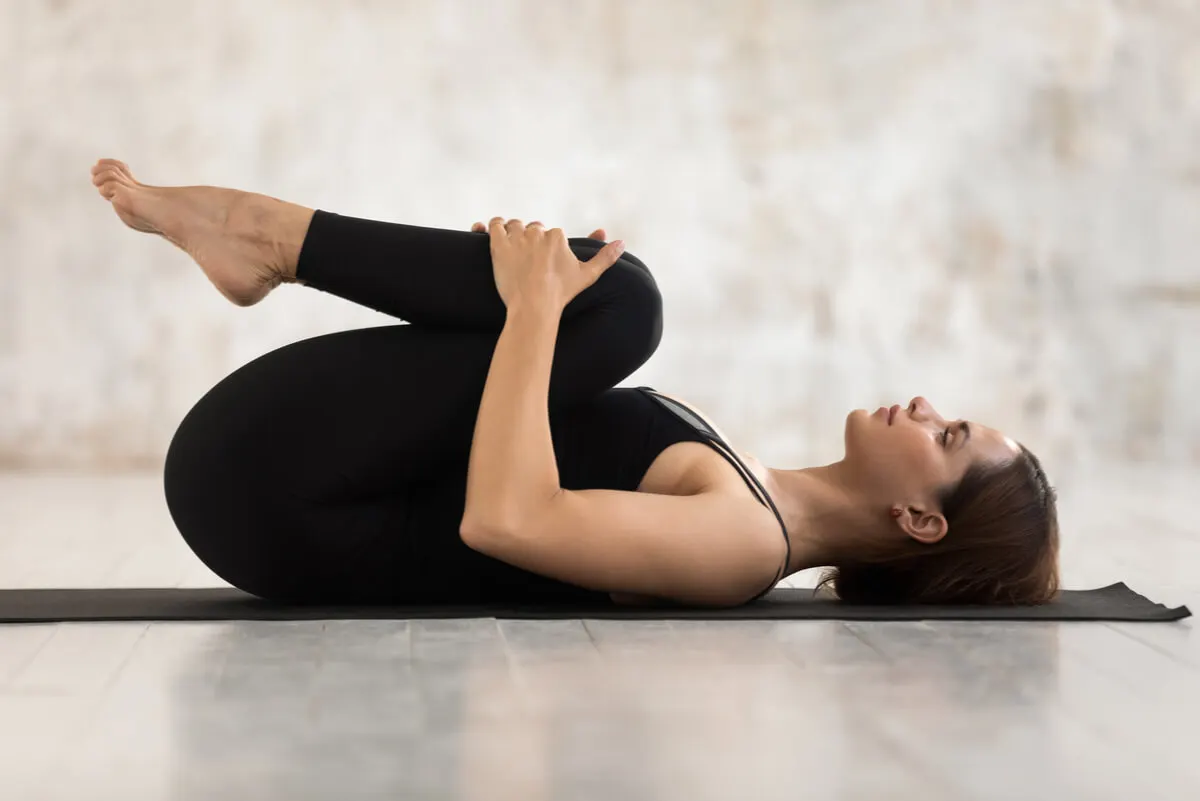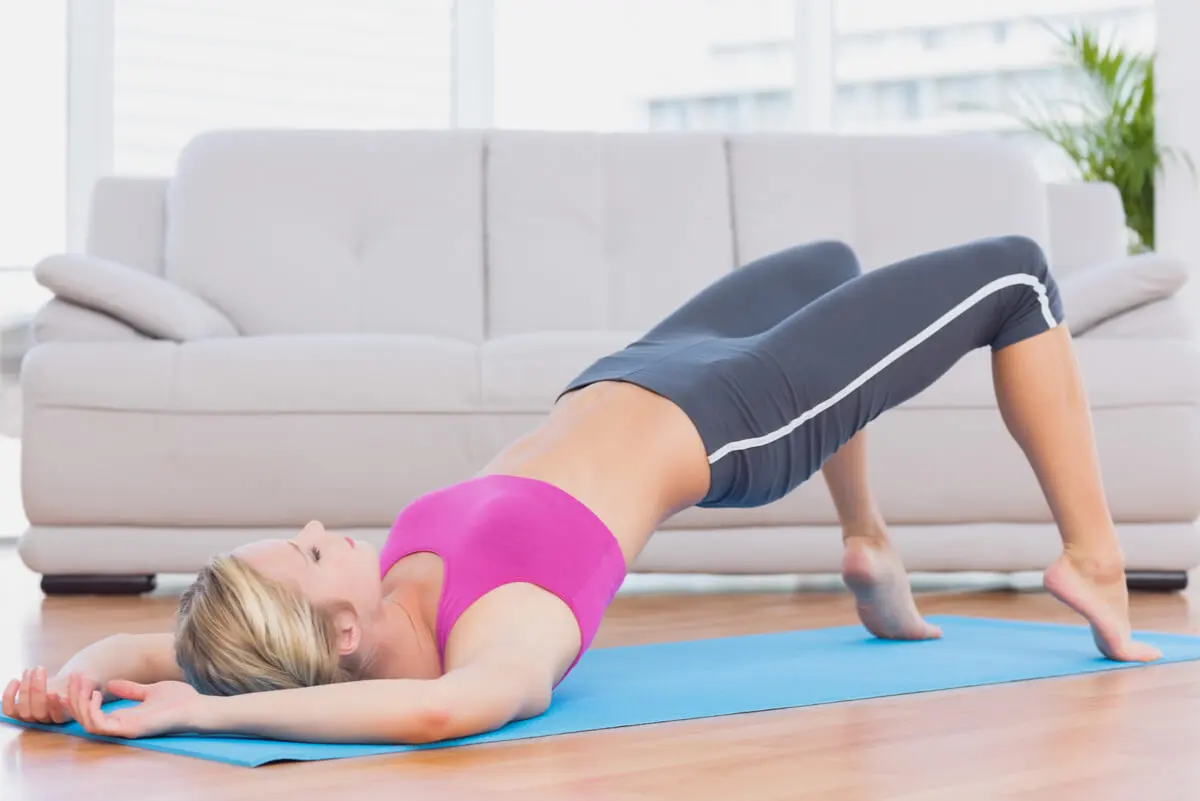7 Stretches for Low Back Pain


Reviewed and approved by the doctor Leonardo Biolatto
There are a number of useful stretches for low back pain, which is characterized by a dull ache in the lower back, between the last rib and the lower buttock area. On some occasions, the ailment may extend to the legs.
When it’s present for a period of no more than three months it’s called acute. If the pain persists after this time, it can be referred to as chronic low back pain. In both cases, it brings complications to those who suffer from it. For this reason, it’s essential to treat it through body stretching.
Causes of low back pain
Identifying the exact source of low back pain can be difficult. An article published in Medical Clinics of North America details the possible causes of low back pain. Here are some of them:
- Wear and tear: due to friction between the vertebrae of the spine.
- Herniated discs: these are protrusions of the lumbar disc between the vertebrae.
- Compression of the nerves as they emerge from the spinal cord.
- Scoliosis: A curve on the spine.
- Trauma: Here we include a large number of cases, from torn ligaments to accidents, bad movements, and improper postures.
Low back pain can be treated with medication, physical therapy, and specific stretches to improve back flexibility. In severe cases, surgery is recommended by medical specialists to relieve pain.

How does stretching help if you have low back pain?
If you have low back pain, the importance of stretching lies in preventing the back muscles from atrophying or weakening. In spite of the pain that moving may cause, rest is not recommended in these cases.
A study published in the Public Health Journal (abstract in English, and article in Spanish) confirms that treatment involving physical activity reduces the intensity of pain and the possibility of medical incapacity.
According to the National Institute of Neurological Disorders and Cardiovascular Accidents, a person’s condition has an impact on low back pain. Low back pain is more common in those who don’t practice moderate physical activity, since the muscles of their back and abdomen aren’t strong enough to support the spine.
Remaining inactive is harmful to the back, as it affects articular cartilage, spinal tissues, and muscle strength. To treat low back pain and other diseases such as osteoarthritis, physical exercise and stretching seem to be necessary.
Read this article: What is Acute Low Back Pain?
7 stretches for low back pain
The stretching exercises for low back pain presented below can reduce muscle stiffness, improve the flexibility of the tendons and ligaments of the back, as well as increase the range of motion in the spine and relieve pain.
It’s important to perform them regularly in order to take care of the lower back. However, if the pain seems to be getting worse, take a break and consult your medical specialist. Read on and get ready to stretch!
1. Sphinx stretch
If you have low back pain, then this exercise will make it easier to stretch the lower back, strengthen the glutes, and relax the lower back:
- Lie on your stomach with your pelvis resting against the floor. Place your arms under the shoulders, palms open, and legs apart.
- Keeping your pelvis on the floor, stretch your back while pressing your hands to the floor. Your gaze should be directed towards the front.
- Remain in this position for 10 seconds.
- When finished, rest and resume the stretch for 5 repetitions.
2. Stretch for spinal mobility
To improve spinal flexibility and soothe low back pain, this simple stretch seems to be helpful:
- Start by sitting on a towel or blanket to release tension in the back. Your legs should be crossed with your hands on your knees.
- Take a breath, stick out your chest and gently bring it forward without moving your buttocks. This exercise shouldn’t cause you any pain. Stay in this position for 10 seconds.
- Then exhale and gently push your back as far as you can.
- Perform 5 to 10 repetitions slowly and with deep breaths.
This spinal arching exercise can also be done in the four-lying position, with hands under shoulders and knees under hips. With this modification in posture, it becomes the cat stretch.
3. Knees to chest
In addition to reducing low back pain, stretching the hip flexors helps us to complete daily activities that require lumbar movement, such as bending over or lifting objects. We’ll do a simple hip flexion, bringing the knees to the chest. This will allow us to work the gluteal area:
- Start by lying on your back with your knees bent and feet flat on the floor.
- Breathe in as you bring your right leg towards your chest while maintaining the curvature of the lumbar spine.
- Then bring your left leg up to your chest.
- Place your hands behind your thighs to hold both legs up to your chest. Take 5 deep breaths.
- When you finish, stretch one leg at a time, bringing it to the floor so that it’s bent, as in the initial posture.

4. Stretching the muscles of the lower back
This stretch is very effective in relieving low back pain, provided it’s done correctly:
- Lying on your back, with your legs stretched out on the floor, bend your right leg and bring it to your chest.
- Once there, place the ankle on the thigh of the opposite leg with the help of your left hand. You should feel the stretch in the tissues of the lower back.
- Hold this position for 10 seconds before repeating the exercise with the left leg.
- Perform this stretch 5 more times.
5. Stretching while alternating arms and legs
Alternating arm and leg raises in the four-legged position allows you to work the back muscles, glutes, and coordination. According to an article published in Work magazine, this stretch maintains tension in the abdominal muscles, which has a positive effect on the spine.
To perform it, it’s important for the spine to be aligned with the head and for it to remain firm. Try not to tilt your hips:
- Start in a four-legged position, hands under your shoulders and knees under your hips.
- Contract your abdominal muscles.
- Ensuring that the torso remains firm, raise the right leg and keep it straight. At the same time, raise your left arm.
- Hold this position for 5 seconds.
- Do the same exercise with the left leg and the opposite arm.
6. Pelvic lift
In addition to stretching the lower back, this exercise also strengthens it. It’s performed as follows:
- Start by lying on your back with your legs bent, your feet flat on the floor and your arms stretched on each side of the body with your palms open.
- Contract the muscles of the abdomen and buttocks.
- In this position, raise your pelvis. A line should be formed from the trunk to the thighs. The hands and feet should remain on the floor.
- Make sure your neck remains relaxed on the floor and stay in this position for 5 seconds, breathing slowly.
- Lower your hips and torso to the floor to rest.

Read this article: Kegel Exercises to Tone Pelvic Muscles and Increase Sexual Pleasure
7. Lumbo-pelvic stabilization
Lumbo-pelvic stabilization is recommended for the treatment of low back pain. Although it isn’t yet clear how many repetitions will get the most out of this exercise, and how long you should perform it for, we recommend you practice it regularly, as follows:
- Start by lying on your back, arms extended on each side of your body and your right leg bent with your foot resting on the floor.
- Contract your abdominal and gluteal muscles.
- Next, raise your left leg with your knee extended as far as you can. Push against the floor with your hands to help you complete the stretch.
- Hold this position for 5 seconds.
- Lower your right leg and rest. Then repeat the stretch with the opposite leg.
Exercises in the framework of a healthy life
There’s no specific stretching routine if you have low back pain, however, these exercises will help you relieve the pain as long as you do them regularly. You can choose two of them each day.
If you have any questions about the best treatment for you, consult a specialized professional for an accurate diagnosis. Remember that lumbar health begins with adopting good posture, walking, and devoting time to physical activity.
All cited sources were thoroughly reviewed by our team to ensure their quality, reliability, currency, and validity. The bibliography of this article was considered reliable and of academic or scientific accuracy.
- Hernández G, Zamora J. Ejercicio físico como tratamiento en el manejo de lumbalgia [Internet]. Scielo; 2017. Disponible en: https://scielosp.org/article/rsap/2017.v19n1/123-128/es/
- Valle M, Olivé A. Signos de alarma de la lumbalgia [Internet]. Elsevier; 2010. Disponible en: https://www.elsevier.es/es-revista-seminarios-fundacion-espanola-reumatologia-274-articulo-signos-alarma-lumbalgia-S1577356609000104
- Gordon R, Bloxham S. A Systematic Review of the Effects of Exercise and Physical Activity on Non-Specific Chronic Low Back Pain. Disponible en: https://www.ncbi.nlm.nih.gov/pmc/articles/PMC4934575/
- National Institute of Neurological Disorders and Stroke [Internet]. Bethesda (MD) Low Back Pain. [Consultado 7 Sep 2020]. Disponible en: https://www.ninds.nih.gov/sites/default/files/low_back_pain_20-ns-5161_march_2020_508c.pdf
- Cigna [Internet] Bloomfield (US) Lumbalgia: Ejercicios para reducir el dolor. [Consultado 7 Sep 2020] Disponible en: https://www.cigna.com/individuals-families/health-wellness/hw-en-espanol/temas-de-salud/lumbalgia-tr5948
- Instituto Médico Arriaza [Internet]. Coruña (ES) Lumbalgia y ejercicios de estabilización lumbo-pélvica. [Consultado 7 Sep 2020]. Disponible en: https://www.arriaza.es/blog/lumbalgia-y-ejercicios-de-estabilizaci%C3%B3n-lumbop%C3%A9lvica
- Langlais, T., and J. Sales de Gauzy. “Escoliosis idiopática (adultos excluidos).” EMC-Aparato Locomotor 53.1 (2020): 1-14.
- López PA. Ejercicios físicos correctos y seguros para la columna vertebral y alternativas para su corrección [Internet] España. [Consultado 7 SEP 2020] Disponible en:
- Avendaño-Badillo, D., L. Díaz-Martínez, and A. Varela-Esquivias. “Eficacia de los ejercicios de estabilización lumbopélvica en pacientes con lumbalgia.” Acta Ortopédica Mexicana 34.1 (2020): 10-15.https://www.diba.cat/documents/41289/17605323/Exercicis+fisics+CV+Pedro+Angel+Lopez.pdf/be7238bd-0c4a-439d-a118-d132aac6cc67
- Patrick, N., Emanski, E., & Knaub, M. A. (2014). Acute and Chronic Low Back Pain. Medical Clinics of North America, 98(4), 777–789. doi:10.1016/j.mcna.2014.03.005
- Shariat, Ardalan et al. ‘Home-based Fundamental Approach to Alleviate Low Back Pain Using Myofascial Release, Stretching, and Spinal Strengthening During the COVID-19 Pandemic’. 1 Jan. 2020 : 1 – 12. Disponible en: https://content.iospress.com/articles/work/wor203248
This text is provided for informational purposes only and does not replace consultation with a professional. If in doubt, consult your specialist.








